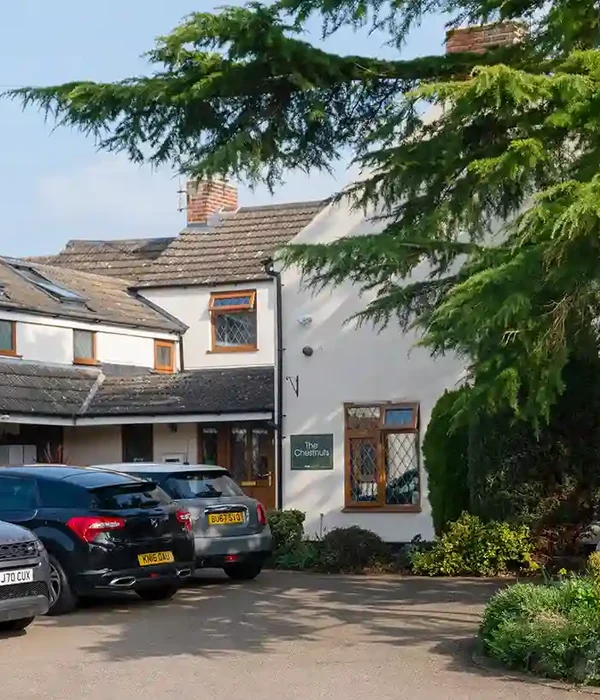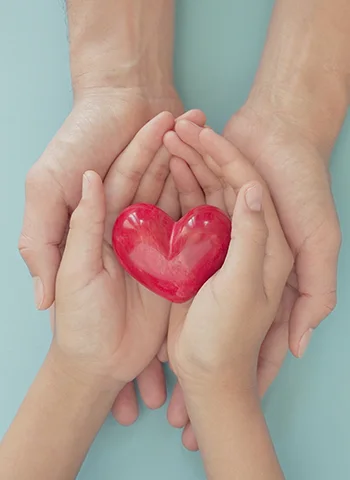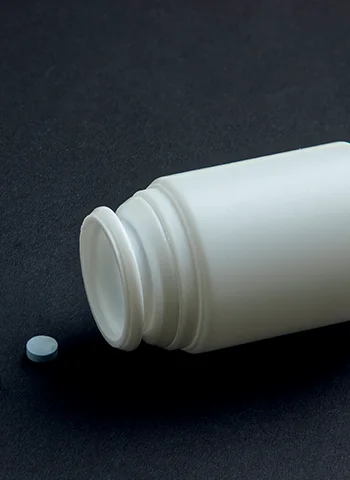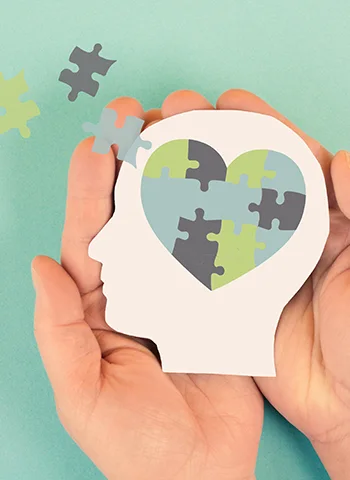PTSD Treatment
Post-traumatic stress disorder (PTSD) can be managed effectively with the right treatment, allowing you to regain control of your life. Common treatments include psychotherapies such as cognitive behavioural therapy (CBT) or EMDR, and, in some cases, medication to reduce anxiety, depression, or intrusive memories.
These PTSD treatment approaches are tailored to help you process trauma and cope with distressing symptoms. It’s normal to feel uncertain about seeking help, but you’re not alone. With the right professional guidance and support, you can find a mental health treatment plan that works for your unique journey toward healing.

Take the First Step Towards Recovery
Steps Together offers personalised support and proven treatments, providing the care, guidance and encouragement you need to move forward with confidence and build a healthier future.

Understanding Post-Traumatic Stress Disorder
Post-traumatic stress disorder (PTSD) can be managed effectively with the right treatment, allowing you to regain control of your life. Common treatments include psychotherapies such as cognitive behavioural therapy (CBT) or EMDR, and, in some cases, medication to reduce anxiety, depression, or intrusive memories.
These PTSD treatment approaches are tailored to help you process trauma and cope with distressing symptoms. It’s normal to feel uncertain about seeking help, but you’re not alone. With the right professional guidance and support, you can find a mental health treatment plan that works for your unique journey toward healing.
Causes and Risk Factors
PTSD is linked to distressing or life-threatening experiences. Common causes include serious accidents, physical or sexual assault, rape, abuse, going to war, and natural disasters. Sometimes, even severe medical emergencies or childbirth can trigger the onset of PTSD.
People with PTSD do not have to experience an event directly to develop the condition. Witnessing a traumatic event or learning about a loved one’s trauma can also cause PTSD. Factors such as personal history, family mental health, and the level of support after trauma can increase your risk.


Symptoms of PTSD
Symptoms of PTSD may appear soon after the traumatic event, or they could begin months or even years later. Some of the common symptoms may include flashbacks, where you relive the event, and vivid nightmares.
You may have trouble sleeping or become overly alert to danger (hypervigilance). Many people experience avoidance, trying to stay away from places or reminders of the trauma. Emotional responses like numbness, guilt, irritability, and hyperarousal are also common.
Psychological Therapies for PTSD
Psychological treatments are effective for addressing PTSD. They can help you manage symptoms, change thought patterns, and reduce distress over time. Therapies used in PTSD treatment can include:
Cognitive Behavioural Therapy
Cognitive Behavioural Therapy is a widely used talking therapy for PTSD. You will work with a therapist to identify and challenge unhelpful thoughts and behaviours. The goal is to help you change the way you think about traumatic events and reduce the hold they have on your life.
CBT often includes practical tasks, such as keeping a diary and practising new coping skills. These activities help you become more aware of how thoughts impact your emotions and actions. You may also learn how to manage flashbacks, nightmares, or anxiety.
Dialectical Behaviour Therapy
Dialectical Behaviour Therapy (DBT) is helpful for people who have PTSD along with high emotional sensitivity or difficulty managing strong feelings. DBT combines techniques from CBT with mindfulness practices.
DBT is often used when PTSD comes with intense emotions, self-harm, or impulsive actions. Sessions can be individual or group-based. Research suggests DBT helps many people feel more stable and in control.
Eye Movement Desensitisation and Reprocessing (EMDR)
Eye Movement Desensitisation and Reprocessing is a unique therapy for PTSD. It involves recalling traumatic memories while following a moving object or listening to sounds in a left-right pattern, which is called bilateral stimulation.
The aim is to help your brain process trauma memories so they become less distressing. During EMDR, the therapist will guide you through sets of eye movements or other rhythmic actions while you focus on your traumatic experience.
Group Therapy
Group therapy for PTSD offers a supportive space where individuals can share their experiences with others who understand what they’re going through. Led by a trained therapist, sessions focus on building trust, reducing isolation, and learning coping strategies.
Group members often find comfort in shared understanding, which can ease feelings of shame or guilt. Through discussion, feedback, and mutual support, participants develop skills to manage symptoms like anxiety, flashbacks, and emotional numbness. Group therapy can be a powerful tool in the PTSD recovery journey.
Services that our multi-speciality addiction rehabilitation centres offer

Assessment and Diagnosis
A PTSD assessment typically starts with standardised questionnaires and structured interviews designed to evaluate your symptoms and identify common signs of post-traumatic stress disorder, such as flashbacks, nightmares, intrusive thoughts, and avoidance behaviours.
During the assessment, a mental health specialist will talk with you in depth. They may use structured interviews and listen to how trauma affects your mood, relationships, and work or school life. If you have both PTSD and another mental health disorder, these professionals can spot this and suggest the right treatment plan.
Active Monitoring and Watchful Waiting
If you have mild symptoms or have only had symptoms for a short time, your care team might suggest active monitoring. This approach means your healthcare provider will keep track of how your symptoms change over weeks instead of immediately starting treatment.
Active monitoring involves regular check-ins, either in person or over the phone. If your symptoms get worse or if they do not improve after about four weeks, your provider may move you to active treatment.

PTSD Treatment for Specific Demographics
PTSD in children and young people can appear in many ways, such as nightmares, mood changes, or withdrawal. Young people often struggle to explain their feelings, so symptoms like irritability or problems with schoolwork may be the first signs.
Peer support connects you with others who have had similar experiences. Talking with someone who understands PTSD can offer comfort, reduce feelings of isolation, and help you find practical ways to cope. Peer support is available through charities, mental health organisations, and online forums.
Mental health specialists will make a detailed assessment of your needs. Your care may involve both medication and therapy to address symptoms like low mood or poor sleep. Regular review meetings can help adjust your plan as you recover.
Medication and Drug Treatment Options
Medicines are sometimes used in PTSD treatment when talking therapies do not work well, or symptoms are especially severe. Some drugs, such as antidepressants, focus on changing levels of chemicals like serotonin in your brain.
Selective Serotonin Reuptake Inhibitors (SSRIs)
The most commonly recommended SSRIs for PTSD treatment in the UK are sertraline and paroxetine, as they have shown effectiveness and are licensed for this use. Other SSRIs like citalopram are sometimes used.
SSRIs are generally started at a low dose and then increased gradually. They may take several weeks to show full effects. Side effects might include nausea, trouble sleeping, or headaches, but these often get better after a few days or weeks.
Other Antidepressants and Medicines
If SSRIs do not help you or if you cannot take them, your doctor may suggest other antidepressants. Examples include venlafaxine, which works like an SSRI but also affects a different chemical called noradrenaline.
In rare or severe cases, you might be offered antipsychotic medicines such as risperidone, especially if you have symptoms like psychosis. Most of the time, medicines are given together with talking therapies to help reduce symptoms faster.
Anti-Anxiety Medications
Anti-anxiety medications can help manage the symptoms of PTSD, especially when anxiety, panic, or insomnia are severe. These medications, such as benzodiazepines or certain antidepressants with anti-anxiety effects, may offer short-term relief.
Careful monitoring is essential, as some medications can be habit-forming, leading to addiction, or they can lose their effectiveness over time. When prescribed appropriately, anti-anxiety medications can improve day-to-day life and support emotional stability during the recovery process.

Seek Treatment for PTSD
Effective treatment can significantly reduce the impact of PTSD and help individuals regain control over their lives. At our centre, we offer evidence-based PTSD treatment designed to support you or your loved one through the healing process. With the right care and support, it’s possible to build resilience, restore a sense of safety, and create a fulfilling life beyond trauma.
At Steps Together, we want to help you overcome your trauma and build a future that’s not weighed down by the past. Our approach focuses on helping you manage symptoms such as flashbacks, anxiety, and emotional distress, so they no longer dictate your daily choices or limit your potential. Recovery starts with the decision to seek help, and we’re here for you.
Frequently Asked Questions
What are the most effective therapies for managing symptoms of post-traumatic stress disorder?
Different types of therapy modalities can be helpful. Talking therapies, especially trauma-focused psychological therapies, are very effective. Cognitive behavioural therapy, eye movement desensitisation and reprocessing, and group therapy can help reduce symptoms. Most people benefit from seeing a mental health professional who has experience with PTSD.
How does cognitive behavioural therapy assist individuals coping with traumatic experiences?
CBT helps you understand and change thought patterns related to your trauma. This therapy can teach you practical ways to cope with triggers and reduce the impact of stressful memories. It is usually done with a trained therapist and may involve exposure to safe reminders of the trauma.
How important is the role of a support network during the PTSD recovery process?
Support from friends, family, and community is very important. A strong support network can help you feel less isolated and more hopeful. Support groups where you can share your experiences with others who understand can be very helpful for your recovery journey.
Can medication play a significant role in the treatment of PTSD?
Medicine can help manage PTSD symptoms, especially if talking therapies alone are not enough. Antidepressants such as sertraline and paroxetine are often prescribed. These medicines may help with low mood, anxiety, and trouble sleeping.
Is it possible to fully recover from PTSD with appropriate treatment?
Many people improve a lot with the right treatment, especially if they start early. Some people may fully recover while others may still have symptoms from time to time. Recovery means gaining control over symptoms, improving daily life, and building resilience.
What are the potential risks or side effects associated with common PTSD treatments?
Some medicines used to treat PTSD can have side effects, such as headaches, nausea, or drowsiness. Psychological therapies may make you feel uncomfortable at first when facing painful memories. It is important to talk to your doctor or therapist about any concerns you have, so your treatment can be adjusted if needed.





